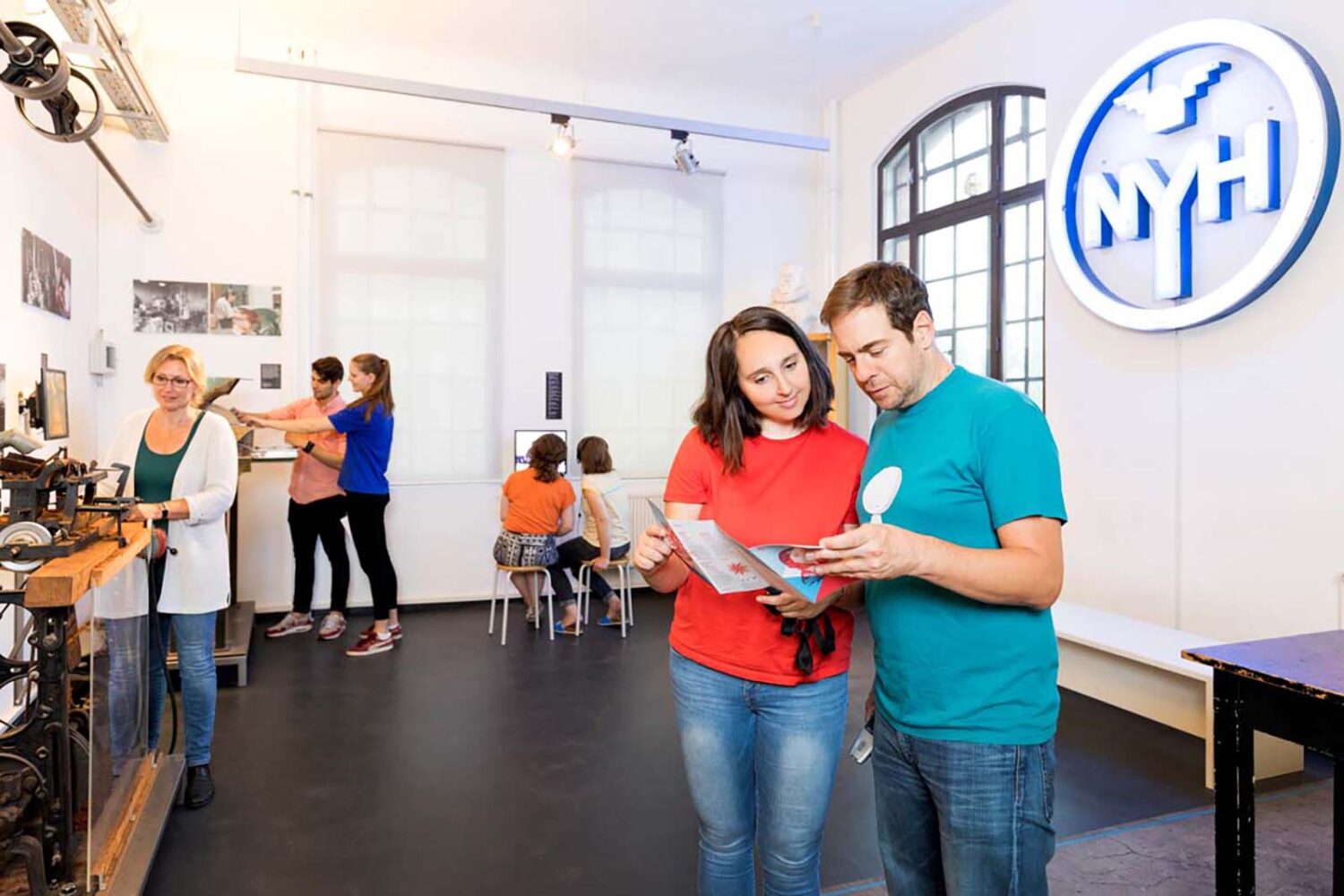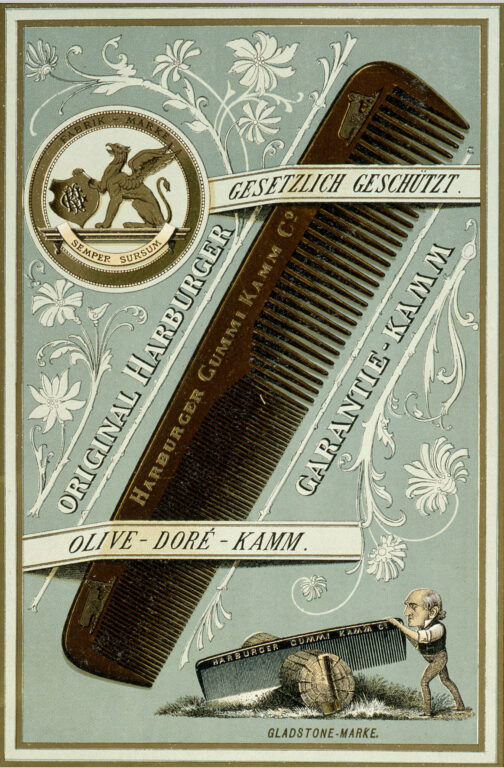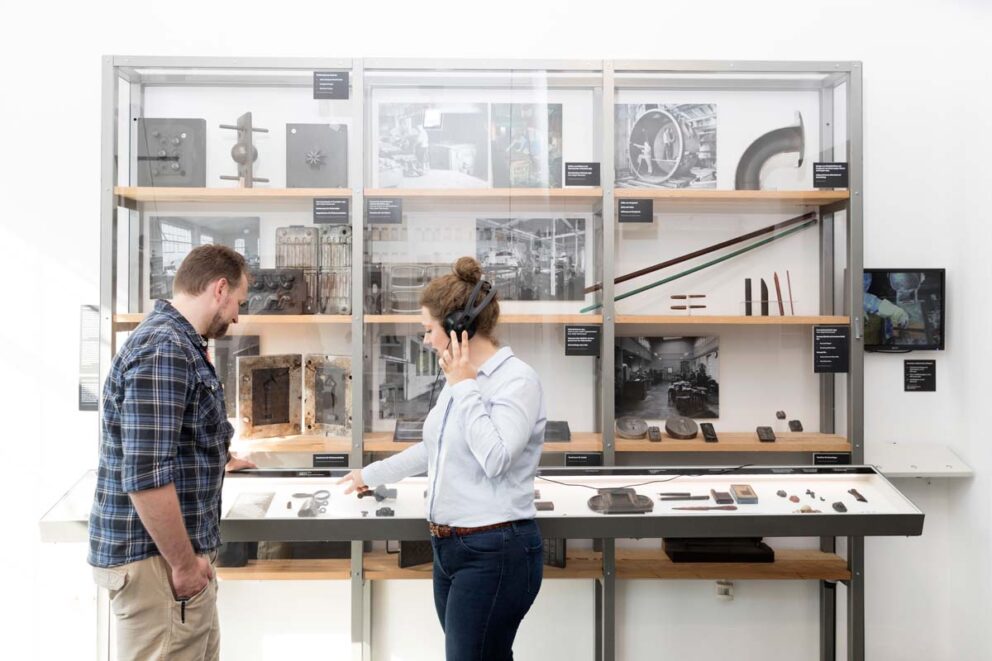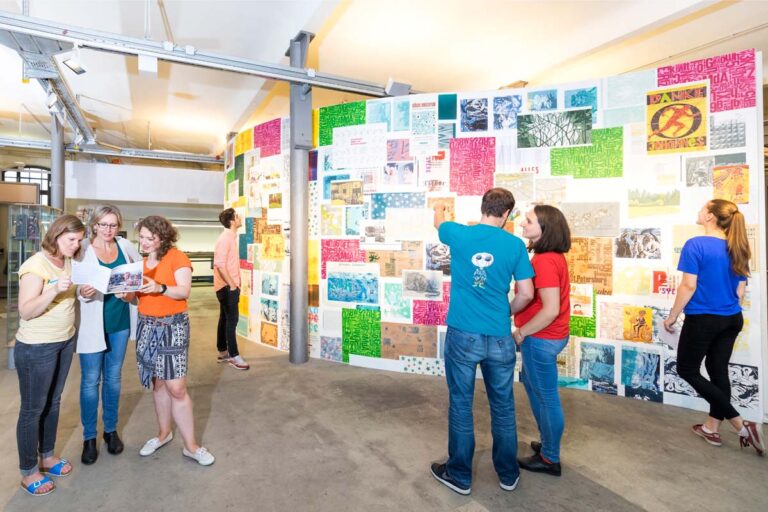
LOOK AT THE COLLECTIONS OF THE MUSEUM OF LABOR
At the end of this journey, the industrial processing of rubber begins, illustrated by the history of the New York Hamburger Gummi-Waaren Compagnie (NYH) and housed in three rooms one above the other at the head of the factory. From caoutchouc to rubber is the name of the first exhibition unit, which in the freight elevator cabin that is no longer used reveals the “secret of the mixture” for natural rubber combs: in addition to sulfur (for hardening), the raw material is only added to linseed oil to facilitate mixing. The contribution of researchers and inventors to the discovery and exploitation of this raw material is commemorated by a hard rubber bust of Alexander von Humboldt, shown at the 1873 Vienna World’s Fair and preserved by the NYH, and a hard rubber wall plaque with a portrait of Charles Goodyear, the discoverer of vulcanization.
A roller model indicates that mechanical processing was also important in addition to chemical processing. Early areas of application document dentures; pipe bowls and walking sticks made of hard rubber show that this substitute for natural materials such as wood, ivory or meerschaum has also made mass production possible through compression molding. A continuous row of showcases offers a closer look at the work steps involved in the production of such simple items as combs. Half a dozen of the 40 work steps are presented.
Company history, product range and advertising
In the second room, which is open towards the stairwell, you can devote yourself to the topics of company history, product range and advertising. The creative idea of placing a display case on the stairs and turning it into a kind of built-in archive ladder is captivating. Here you will primarily find technical items, such as taps and pipes used in the chemical industry because of their resistance to acids and alkalis, or spinning pots and spinning bobbins for the production of artificial silk. The small things of everyday use are housed in a paternoster display case that can also be seen from the stairwell: inkwells, writing utensils, ashtrays, handles and fittings, for example. If you want to take a closer look at brochures or other advertising material, you will find them – protected from permanent light – in drawers in the base of the showcase. Two very special hard rubber products hang on the wall: A Caesar bust and a Madonna figure from the older Harburg competition. The company history can be studied in a folding book.
Working in comb production
In the third room, under the title Man and Machine, three workplaces in comb production are presented: work on a comb cutting machine for dust and lice combs, on a vulcanization press and on a wet pumice block. Another complex in this room is called “Fabrik in Gesellschaft”, the center of which is a safe containing a number of objects that symbolically express work: shares, wage slips, a wage book for calculating piecework, canteen emergency money; Medals of honor that the company received at exhibitions, e.g. at the world exhibitions in London in 1862 or in Vienna in 1873; so-called rubber medals, which were awarded to employees by the company; Gifts from colleagues for anniversaries, such as a hard rubber inlaid tray. On the wall mounted as an exhibition element in front of the wall on both sides of the safe, the professional biographies of a worker, an employee, a director are presented, and information is given about the history of the company as a wartime operation under National Socialism. Under the headings “patriarchal-social” and “fought and disputed” social institutions and achievements and the disputes are presented.












